Looking for sample homeschool schedules? Keep reading!
Scheduling your homeschool day may seem overwhelming at first, so seeing examples of other families’ schedules can help! In the video and blog post below, we share four common types of schedules, each from real families using The Good and the Beautiful curriculum in their homeschools.
Download sample homeschool schedules in our free printable!
Keep reading to learn more about the various types of school schedules and find one that may work in your homeschool.
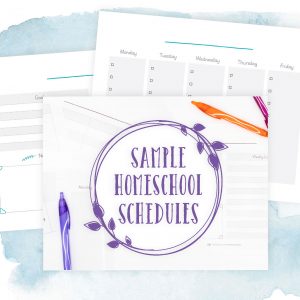

Traditional Block Schedule
The traditional block schedule is best for teaching specific subjects at specific times. This example shows how a family with four school-aged children has scheduled their days.
- Block scheduling works great for families who thrive when life is more structured.
- When one or both of the homeschooling parents work, scheduling schoolwork at specific times can ease stress and keep everyone accountable.
- Some children feel more comfortable when they know exactly what is happening each day. This schedule brings peace to children who like routine.
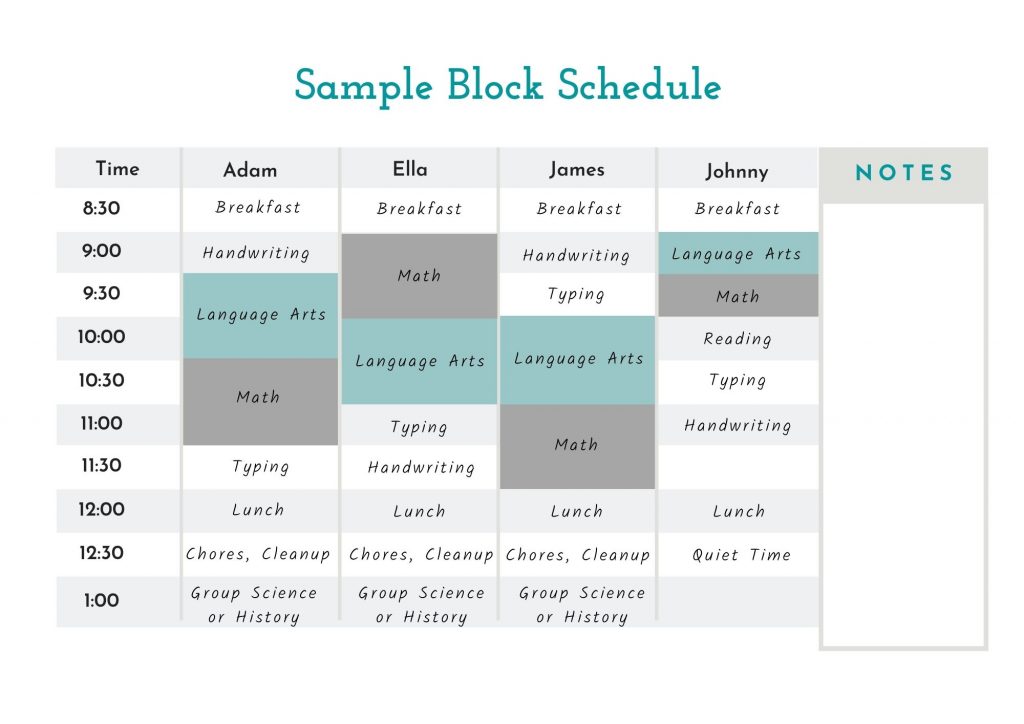
If you choose to use a block schedule, make sure to have a backup plan for how to handle interruptions. Some families have a “scaled down” schedule, or a Plan B, that they use when unexpected events occur.

Homeschool Relaxed Schedule
With a relaxed schedule, the focus isn’t on the exact time of day schoolwork is done, but rather that a student completes the necessary subjects in a general period of time. This is ideal for families who like routine but find that working with a strict schedule creates stress.
- These children have bigger gaps in their days than those with a block schedule, which works well for younger children or those who can’t sit still very long.
- A relaxed schedule is a semi-structured homeschool plan, but it is also very flexible for your family’s needs. This family keeps Fridays open for field trips, appointments, and other things that come up.
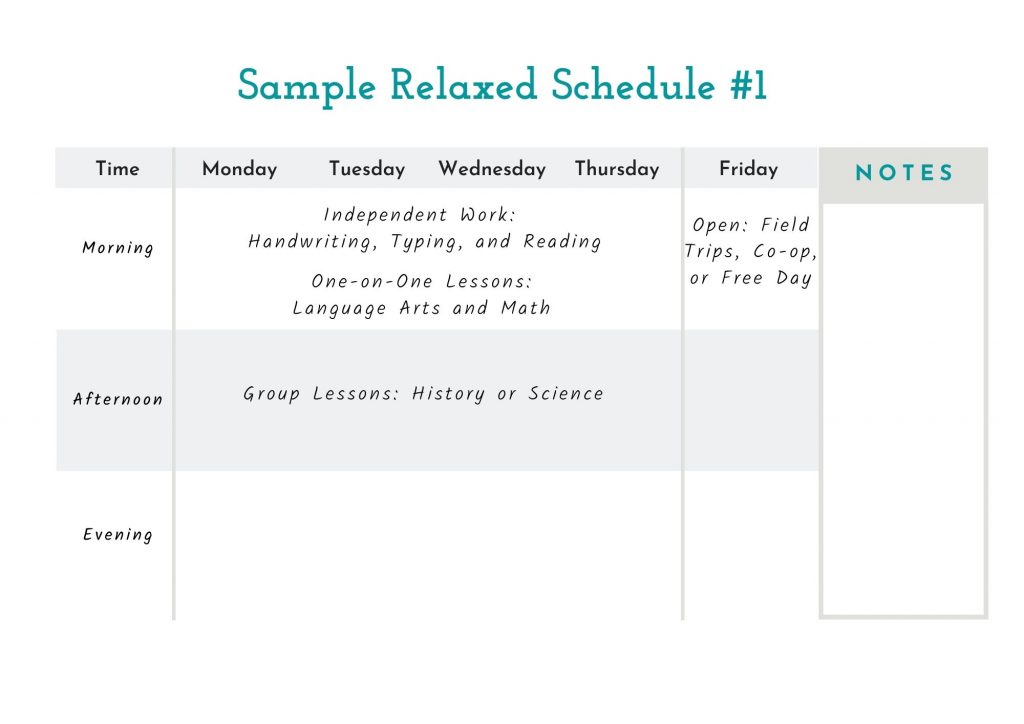
This second example is how one family schedules their homeschool hours around the parents’ work schedules. Many families find that evenings and even weekends work well for school lessons. Our easy-to-teach, open-and-go courses make this type of scheduling ideal for families that need flexibility.
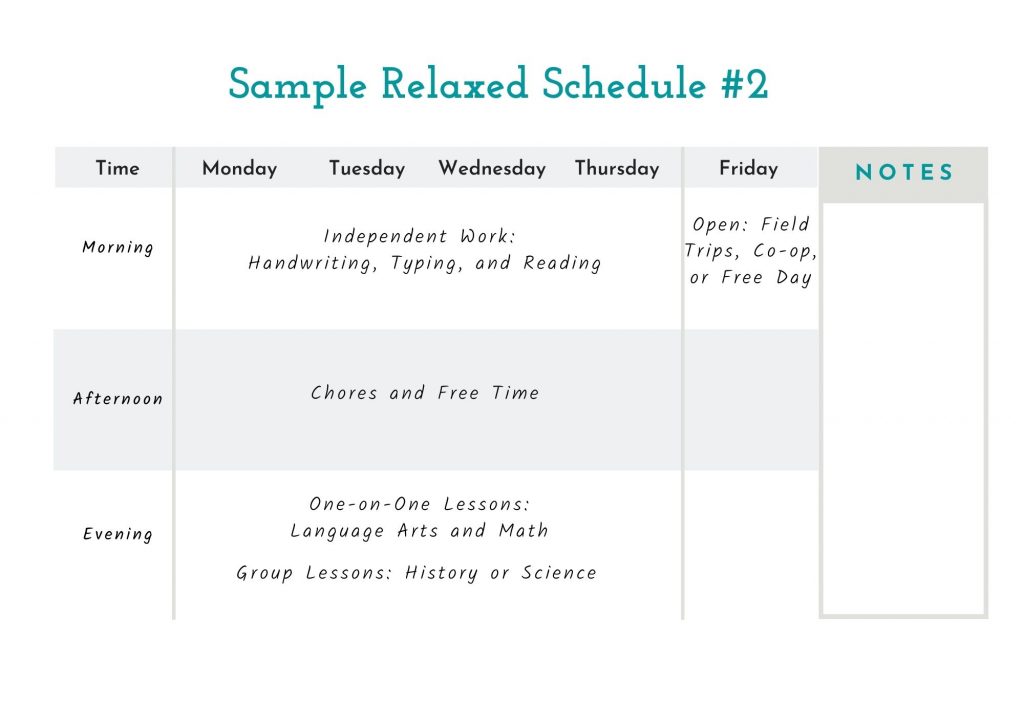

Homeschool Loop Schedule
An even more relaxed schedule is a loop schedule. This family has decided how many times they would like to cover each subject every week. They organize the information into a list and begin working at the top of the list.
Schoolwork is not done at a particular time; instead, children complete lessons whenever is best for them each day. When they finish the list, they just return to the top and start again. Our family-style courses fit perfectly into a loop schedule, as parents teach history and science to a variety of ages at one time.
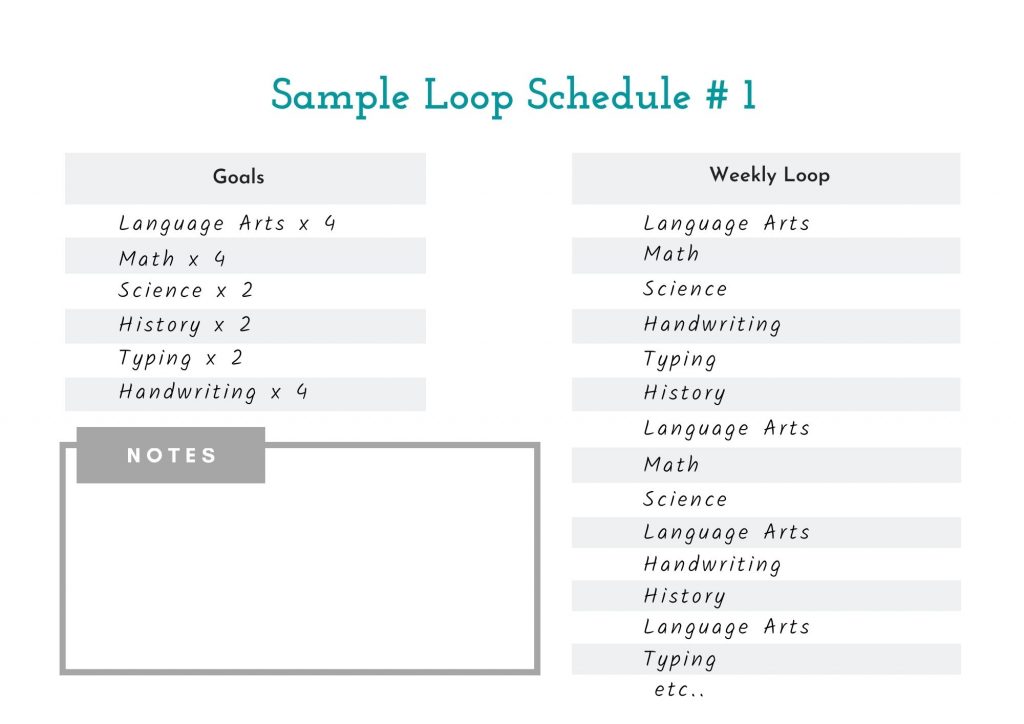
Homeschool parents understand that unexpected events interrupt school time, and sometimes it can be difficult to adjust timed schedules to allow for those interruptions. A loop schedule accommodates this.
Loop schedules are great for families who know which subjects they want to cover but also need extra flexibility in how much time is spent on any subject. If children become very interested in a particular botany concept, for example, parents can expand on it for as long as they’d like. A family then spends less time on lessons that the children have learned quickly.
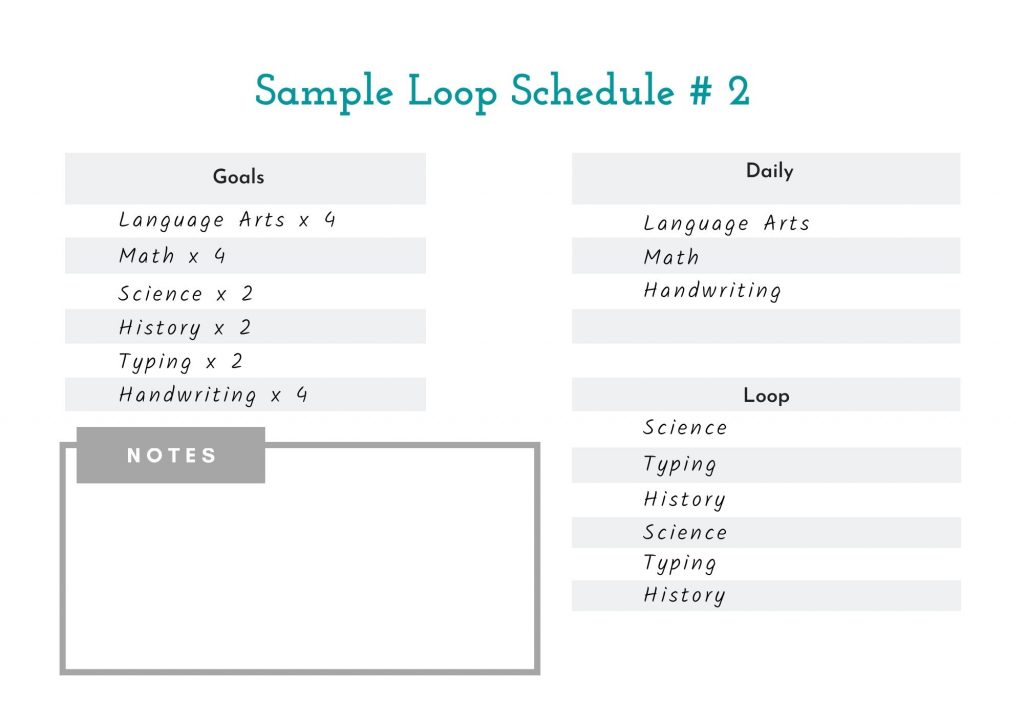
This second sample shows a loop schedule where a child completes a few core subjects (language arts, math, and handwriting) daily, and rotates other subjects throughout the week. This works great for courses that do not need to be completed every day and are done family-style, like history or science, and electives like typing or arts and crafts.

Homeschool Checklist
Our last schedule is a simple daily or weekly checklist to keep both students and parents focused on the tasks to be completed, but not at any specific time.
- This schedule works well for older children: a checklist teaches older children how to manage their time, a necessary skill in adulthood. The Good and the Beautiful curriculum fosters independence as children mature and become more independent with their learning.
- Checklists are also great visuals for children of any age. A checklist shows the tasks to complete each week and easily complements any other scheduling style as a management tool.
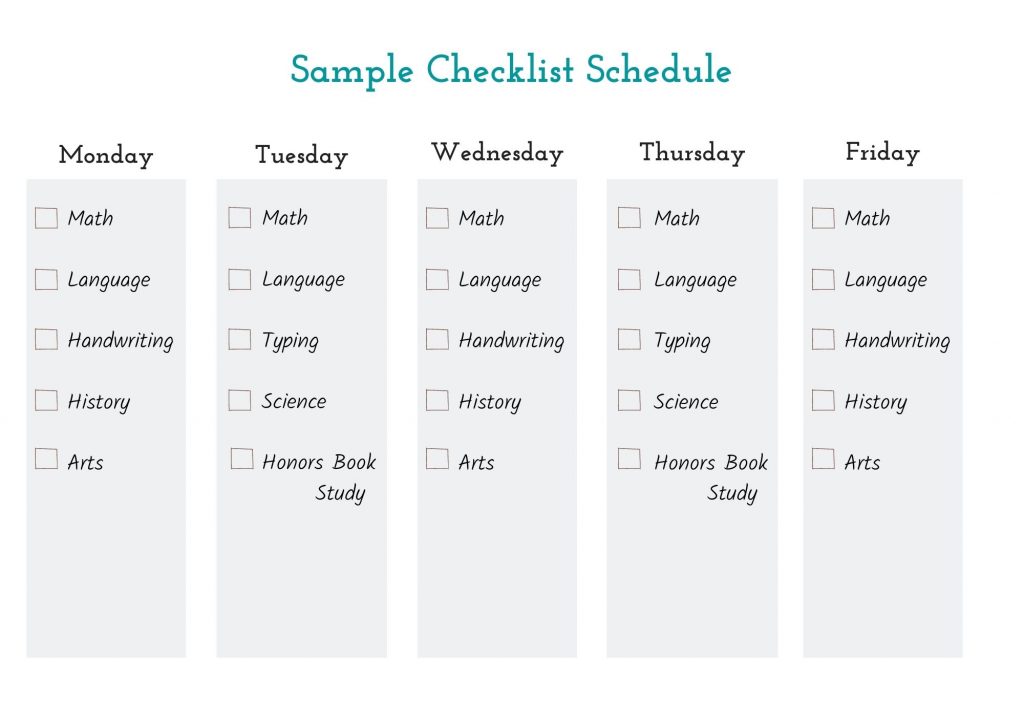
When choosing a schedule style, consider which children and subjects need more one-on-one time and those children who can work independently. Many parents are surprised at the young age children are able to complete lessons, or parts of lessons, on their own. This contributes to a love of learning and independence, which are so valuable for a child’s self-confidence!

Finally, be flexible and give yourself grace.
While there is no one-size-fits-all solution, the beauty of homeschooling is that formal education doesn’t need to happen during typical school hours. Saturdays, evenings … schoolwork can happen anytime!


Our courses provide you with not only flexibility but also the academic rigor needed to give your children a well-balanced, high-quality education! If you are unsure of what is the best fit for your family, try out a few different ways of scheduling your days to learn what works and what doesn’t. Many homeschool parents rotate different schedules in different years, or even in the same school year.
This is the true good and beautiful aspect of homeschooling. It’s up to you. Your schedule must fit your family at any given time. Learn from others, but make it your own too!

You may also like . . .


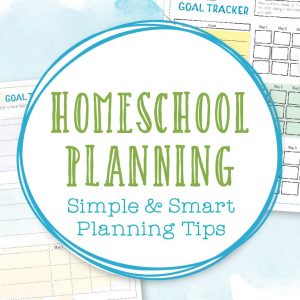








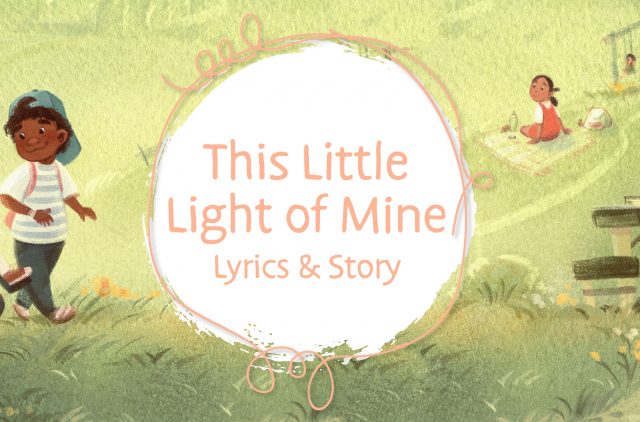


Comments
I have tried a few of these. This year I found that a mashup of the block schedual and the simple schedule with Fridays for extra things has worked best for us.
Thank you for the example schedules! It’s very helpful to see and be able to find one that would work best for our family.
Scheduling is what I/we struggle with the most. We just haven’t found what works for us yet.
Wow! Thank you for sharing these schedules! We love The Good and the Beautiful! 💗
Is there a way to make the printable downloads editable?
Thank you for your interest, Stephanie! Programs are available to edit PDF documents, but we do not have any specific suggestions. We hope you enjoy the schedules!